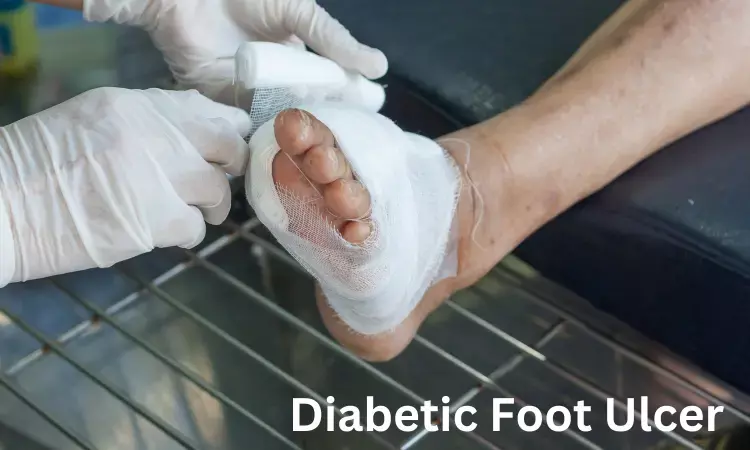- Home
- Medical news & Guidelines
- Anesthesiology
- Cardiology and CTVS
- Critical Care
- Dentistry
- Dermatology
- Diabetes and Endocrinology
- ENT
- Gastroenterology
- Medicine
- Nephrology
- Neurology
- Obstretics-Gynaecology
- Oncology
- Ophthalmology
- Orthopaedics
- Pediatrics-Neonatology
- Psychiatry
- Pulmonology
- Radiology
- Surgery
- Urology
- Laboratory Medicine
- Diet
- Nursing
- Paramedical
- Physiotherapy
- Health news
- Fact Check
- Bone Health Fact Check
- Brain Health Fact Check
- Cancer Related Fact Check
- Child Care Fact Check
- Dental and oral health fact check
- Diabetes and metabolic health fact check
- Diet and Nutrition Fact Check
- Eye and ENT Care Fact Check
- Fitness fact check
- Gut health fact check
- Heart health fact check
- Kidney health fact check
- Medical education fact check
- Men's health fact check
- Respiratory fact check
- Skin and hair care fact check
- Vaccine and Immunization fact check
- Women's health fact check
- AYUSH
- State News
- Andaman and Nicobar Islands
- Andhra Pradesh
- Arunachal Pradesh
- Assam
- Bihar
- Chandigarh
- Chattisgarh
- Dadra and Nagar Haveli
- Daman and Diu
- Delhi
- Goa
- Gujarat
- Haryana
- Himachal Pradesh
- Jammu & Kashmir
- Jharkhand
- Karnataka
- Kerala
- Ladakh
- Lakshadweep
- Madhya Pradesh
- Maharashtra
- Manipur
- Meghalaya
- Mizoram
- Nagaland
- Odisha
- Puducherry
- Punjab
- Rajasthan
- Sikkim
- Tamil Nadu
- Telangana
- Tripura
- Uttar Pradesh
- Uttrakhand
- West Bengal
- Medical Education
- Industry
Albuminuric diabetic kidney disease may increase risk of Diabetic Foot Ulcer by two to three folds

France: According to a recent research paper published in the Journal of Diabetes And its Complications, the researchers have concluded that in type 2 diabetes (T2D) patients, albuminuric Diabetic Kidney Disease (DKD) is associated with two to three folds increased risk of Diabetic Foot Ulcers (DFU).
The main reason for reduced life expectancy is cardiovascular. Among T2D patients, nearly 30 % have DKD. The renal complications are high in such patients, and it has been researched that there is a six-fold more risk of lower extremity amputation in patients who initiate dialysis.
DFU is a complex problem in diabetic patients with an increased risk of death. It has complications like poorer prognosis: more amputations, sepsis, extended hospital stays and death.
In DKD, the rate of wound healing is reduced, and the density of microvessels adjacent to the site of the wound is also reduced.
CKD patients have higher rates of diabetic peripheral neuropathy and peripheral arterial disease.
Foot insensitivity predicts later decline of renal function, so more longitudinal studies are required to demonstrate if DKD subjects defined by an eGFR below 60 mL/min/1.73 m2 and albuminuria higher than 30 mg/24H are at higher risk of DFUs.
There exist data gaps. Normoalbuminuric DKD is frequent in T2D and has a better prognosis: low mortality, less ESRD and cardiovascular events. The researchers say, “We do not know whether normoalbuminuric DKD favours DFUs.”
To fill the data gaps and consider the above background, a study was conducted by Gauthier Borderie and colleagues from the Bordeaux CHU and University.
The primary study points are:
- The researchers followed up on 520 uncontrolled/T2D subjects hospitalized in the diabetology ward (2009 – 2017) for five years.
- The researchers recorded new cases of DFUs and analyzed their relationship to the baseline history of DKD using LogRank and multivariate Cox regression analysis.
- The subjects were men (57.9 %) of age 62 years and had diabetes from 14 ± 10 years, HbA1c: 8.7 ± 1.8 %.
- Three hundred eighteen patients had uncontrolled diabetes (HbA1c ≥ 8 %), 349 patients had diabetic complications, and 209 patients had both uncontrolled and complicated.
- The subjects had complications like microangiopathies (33.7%), previous foot ulcers (22.1%), DKD (44.8%), and retinopathies (26.9 %).
- New cases of Fifty-seven DFU were recorded in DKD subjects during a follow-up period of 48 months.
- DKD was related to later DFU having an HR of 1.79.
- Among the 233 DKD subjects, 129 constituting 55.3 %, had an isolated Albumin Excretion Rate (AER) > 30 mg/24H, 41 constituting 17.6 % had an isolated eGFR<60 mL/min/1.73 m2, and 63 constituting 27.0 % cumulated both abnormalities.
- Albuminuric DKDs were related to later DFU with eGFR≥60 having HR of 1.91 with eGFR<60 having HR 2.53, whereas normoalbuminuric DKD was not with HR, 1.04 despite similar rates of neuropathies, peripheral arterial diseases, and retinopathies.
To conclude, among T2D patients, albuminuric DKD is tied to a two to three folds increased risk of DFUs, but not for the 41 subjects with normoalbuminuric DKD.
Further reading:
Borderie, Gauthier, et al. “Albuminuric Diabetic Kidney Disease Predicts Foot Ulcers in Type 2 Diabetes.” Journal of Diabetes and Its Complications, vol. 37, no. 2, Elsevier BV, Feb. 2023, p. 108403. Crossref, https://doi.org/10.1016/j.jdiacomp.2023.108403.
BDS, MDS in Periodontics and Implantology
Dr. Aditi Yadav is a BDS, MDS in Periodontics and Implantology. She has a clinical experience of 5 years as a laser dental surgeon. She also has a Diploma in clinical research and pharmacovigilance and is a Certified data scientist. She is currently working as a content developer in e-health services. Dr. Yadav has a keen interest in Medical Journalism and is actively involved in Medical Research writing.
Dr Kamal Kant Kohli-MBBS, DTCD- a chest specialist with more than 30 years of practice and a flair for writing clinical articles, Dr Kamal Kant Kohli joined Medical Dialogues as a Chief Editor of Medical News. Besides writing articles, as an editor, he proofreads and verifies all the medical content published on Medical Dialogues including those coming from journals, studies,medical conferences,guidelines etc. Email: drkohli@medicaldialogues.in. Contact no. 011-43720751


